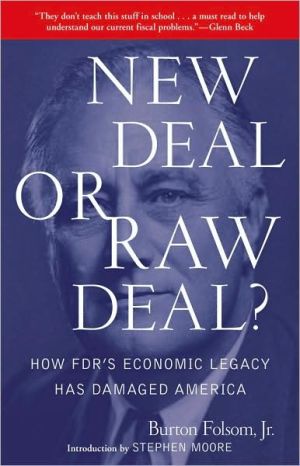Overthrow: America's Century of Regime Change from Hawaii to Iraq
""Regime change" did not begin with the administration of George W. Bush but has been an integral part of American foreign policy for more than one hundred years. Starting with the overthrow of the Hawaiian monarchy in 1893 and continuing through the entire twentieth century and into our own time, the United States has not hesitated to topple governments that stood in the way of its political and economic goals. The invasion of Iraq in 2003 is the latest, though perhaps not the last, example...
Search in google:
A fast-paced narrative history of the coups, revolutions, and invasions by which the United States has toppled fourteen foreign governments—-not always to its own benefit.In Overthrow, Stephen Kinzer tells the stories of the audacious politicians, spies, military commanders, and business executives who took it upon themselves to depose monarchs, presidents, and prime ministers. He also shows that the U.S. government has often pursued these operations without understanding the countries involved; as a result, many of them have had disastrous long-term consequences. The New York Times - Anatol Lieven Kinzer has written a detailed, passionate and convincing book, several chapters of which have the pace and grip of a good thriller. It should be essential reading for any Americans who wish to understand both their country's historical record in international affairs, and why that record has provoked anger and distrust in much of the world. Most important, it helps explain why, outside of Eastern Europe, American pronouncements about spreading democracy and freedom, as repeatedly employed by the Bush administration, are met with widespread incredulity.
Overthrow\ America's Century of Regime Change from Hawaii to Iraq \ \ By Kinzer, Stephen \ Times Books\ Copyright © 2006 Kinzer, Stephen\ All right reserved.\ ISBN: 0805078614 \ \ \ American leaders might be forgiven for intervening in countries about which they were so ignorant. What is harder to justify is their refusal to listen to their own intelligence agents. Chiefs of the CIA stations in Tehran, Guatemala City, Saigon, and Santiago explicitly warned against staging these coups. Officials in Washington paid no heed. They rejected or ignored all intelligence reports that contradicted what they instinctively believed.\ Americans who think about and make foreign policy grasp the nature of alliances, big-power rivalries, and wars of conquest. The passionate desire of people in poor countries to assert control over their natural resources, which pushed them into conflict with the United States during the Cold War, lay completely outside the experience of most American leaders. Henry Kissinger spoke for them, eloquently as always, after Chilean foreign minister Gabriel Valdes accused him of knowing nothing about the Southern Hemisphere.\ "No, and I don't care," Kissinger replied. "Nothing important can come from the south. History has never been produced in the south. The axis of history starts in Moscow, goes to Bonn, crosses over to Washington, and then goes to Tokyo. What happens inthe south is of no importance."\ This attitude made it easy for American statesmen to misunderstand why nationalist movements arose in the developing world.\
\ Anatol LievenKinzer has written a detailed, passionate and convincing book, several chapters of which have the pace and grip of a good thriller. It should be essential reading for any Americans who wish to understand both their country's historical record in international affairs, and why that record has provoked anger and distrust in much of the world. Most important, it helps explain why, outside of Eastern Europe, American pronouncements about spreading democracy and freedom, as repeatedly employed by the Bush administration, are met with widespread incredulity.\ — The New York Times\ \ \ \ \ Julia E. SweigI have a sad suspicion that, with Iraq's seemingly endless toll, Overthrow will likewise become required reading.\ — The Washington Post\ \ \ Publishers WeeklyThe recent ouster of Saddam Hussein may have turned "regime change" into a contemporary buzzword, but it's been a tactic of American foreign policy for more than 110 years. Beginning with the ouster of Hawaii's monarchy in 1893, Kinzer runs through the foreign governments the U.S. has had a hand in toppling, some of which he has written about at length before (in All the Shah's Men, etc.). Recent invasions of countries such as Grenada and Panama may be more familiar to readers than earlier interventions in Iran and Nicaragua, but Kinzer, a foreign correspondent for the New York Times, brings a rich narrative immediacy to all of his stories. Although some of his assertions overreach themselves-as when he proposes that better conduct by the American government in the Spanish-American War might have prevented the rise of Castro a half-century later-he makes a persuasive case that U.S. intervention destabilizes world politics and often leaves countries worse off than they were before. Kinzer's argument isn't new, but it's delivered in unusually moderate tones, which may earn him an audience larger than the usual crew of die-hard leftists. (Apr.) Copyright 2006 Reed Business Information.\ \ \ \ \ Foreign AffairsOver the last century, the United States has intervened in over a dozen countries to overthrow their governments -- more often than any other great power in modern history. In this fascinating history, Kinzer explores the reasons for such operations and what they accomplished. The pattern of regime-change operations has followed the arc of U.S. global engagement in the twentieth century. In the early cases -- Hawaii, Cuba, Nicaragua, Honduras -- U.S. presidents acted openly and in imperial fashion to protect corporate interests and spheres of influence; in the Cold War cases -- Iran, Guatemala, South Vietnam, Chile -- more subtle techniques and clandestine actions prevailed. The most recent interventions -- in Afghanistan and Iraq -- reveal new and staggeringly more complicated circumstances and calculations. Across the cases, which are recounted in lively and colorful detail, Kinzer argues that the motives for regime change have ranged from the prosaic and the pecuniary to the principled and the strategic. But in each case, action was undertaken when foreign governments refused to protect U.S. interests as defined at the moment. What Kinzer does not clarify is why interventions occurred in some countries and not others. Still, he offers a useful portrait of the presidents who have influenced the exercise of U.S. power and the interesting judgment that interventions have often succeeded in their immediate goals but failed to advance U.S. interests in the long term.\ \ \ \ \ Library JournalNew York Times foreign correspondent Kinzer has collected 14 cases in which the United States overthrew another government, starting with the 1893 annexation of Hawaii. By doing so, he creates an image of U.S. policymakers as arrogant, ignorant, and driven entirely by self-interest. His analysis of overthrow operations in Cuba, the Philippines, Panama, Nicaragua, Honduras, Grenada, Iran, Vietnam, Chile, and Afghanistan suggests that the invasion of Iraq was not an isolated case but an extension of settled American policy. Kinzer considerably vitiates his thesis, however, by ignoring the two world wars entirely, even though the wartime aim of the Allies in Europe, for instance, was explicitly regime change. He overreaches in arguing that 9/11 stemmed directly from the overthrow of Iranian Prime Minister Mossadegh in 1953, an assertion he originally made in All the Shah's Men. The chapter on Iraq attacks the Bush administration, comparing its mistakes to those of presidents from William McKinley on. Although not a balanced portrayal, this book is recommended as an addition to collections on foreign affairs. [See Prepub Alert, LJ 12/05.]-Edwin B. Burgess, U.S. Army Combined Arms Research Lib., Fort Leavenworth, KS Copyright 2006 Reed Business Information.\ \ \ \ \ Kirkus ReviewsMossadegh, Diem, Arbenz, Allende, Liliuokalani, Kissinger: In this cheerless catalogue of villains and victims, New York Times correspondent Kinzer (All the Shah's Men, 2003, etc.) convincingly portrays U.S. foreign policy as a branch of organized crime. In 1901, a veteran of the Wounded Knee massacre ordered his men to turn the Philippines into "a howling wilderness," kill everyone over ten years of age and take no prisoners. Anticipating My Lai and Abu Ghraib by many decades, his troops responded by committing all manner of atrocities, including inventing a devious form of torture that led the Indianapolis News to opine that the U.S. had adopted "the methods of barbarism." Just a few years before, America had first stretched its imperial wings by seizing Hawaii from its rightful owners at the behest of a handful of sugar barons. Their spiritual heirs would call for the ouster of democratically elected Chilean president Salvador Allende, and Kissinger and Nixon would happily oblige, funding and arming a coup that, eerily enough, began on Sept. 11, 1973. Kinzer recounts these and several other exercises in regime change conducted more or less openly (save for those of the Nixon administration, sneaky in everything). The project is a timely one, given the ongoing exercises in Iraq and Afghanistan, which seem tailor-made for the moral of the story-that, with the exception of Reagan's Grenada invasion of 1983, those operations have, "in the end, weakened rather than strengthened American security," having had the cumulative effect of serving as a rallying point for anti-Americanism worldwide, increasing political divisions at home, amplifying the foreign entanglements that the FoundingFathers so feared and proving that "the United States was a hypocritical nation, as cynical as any other."A sobering and saddening book.\ \








